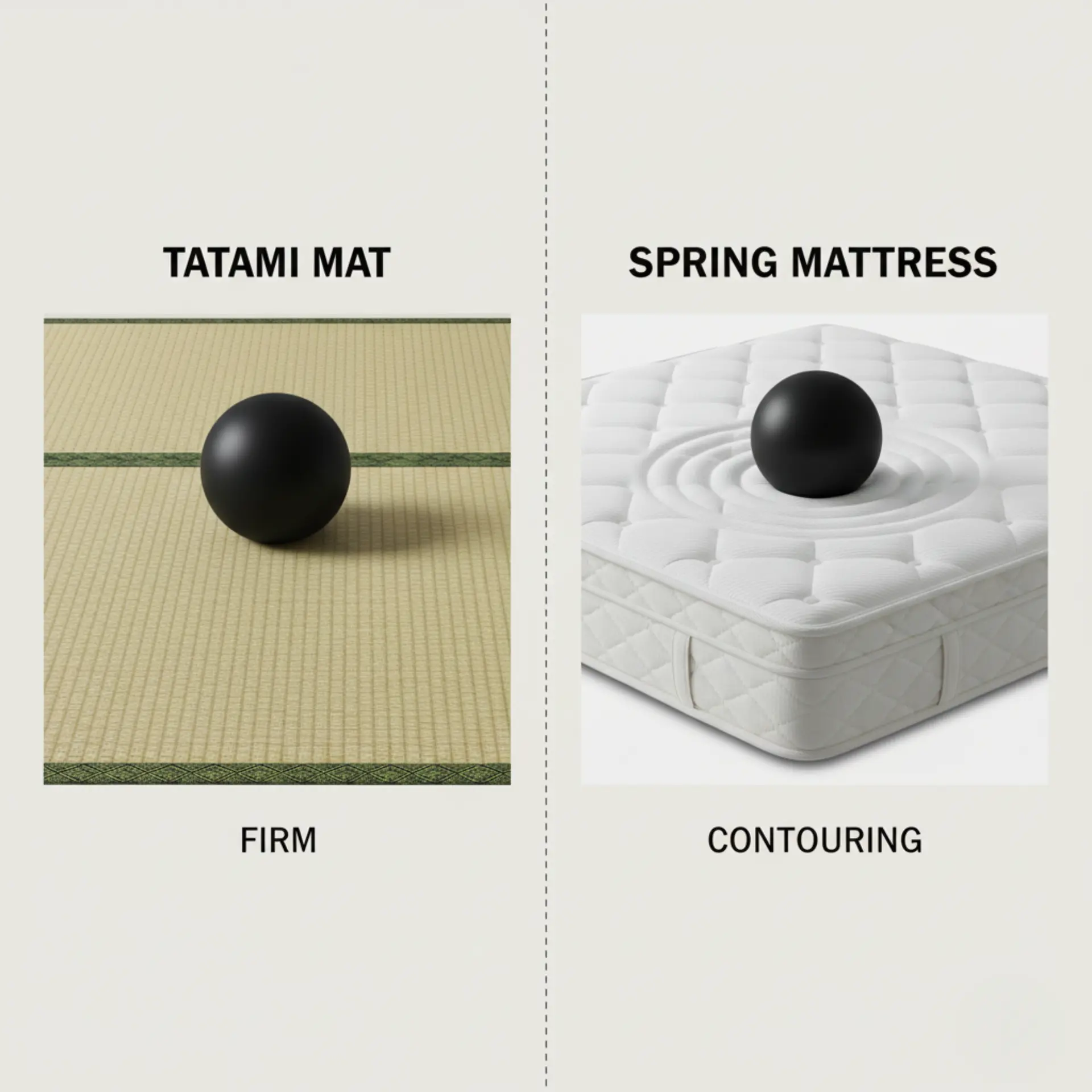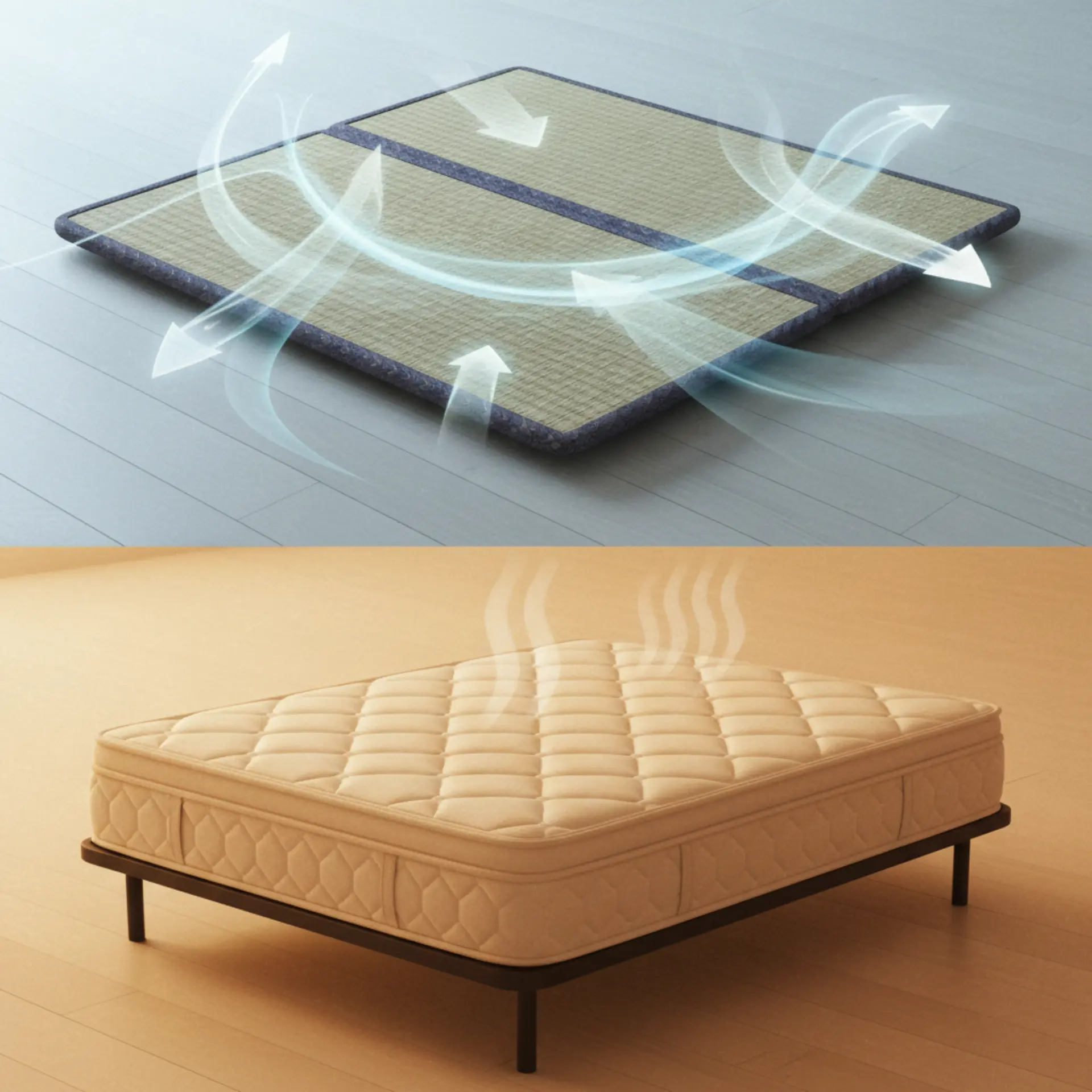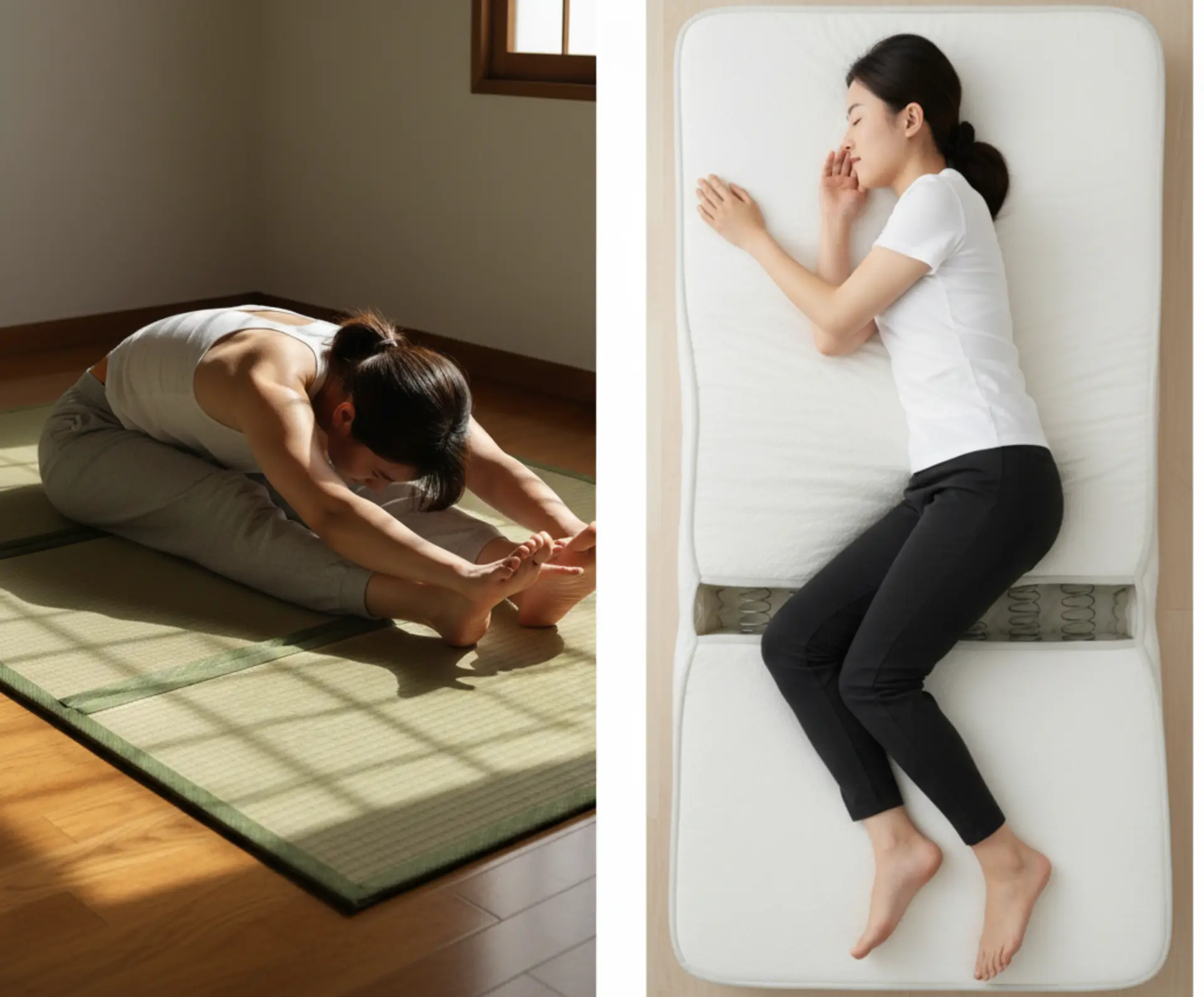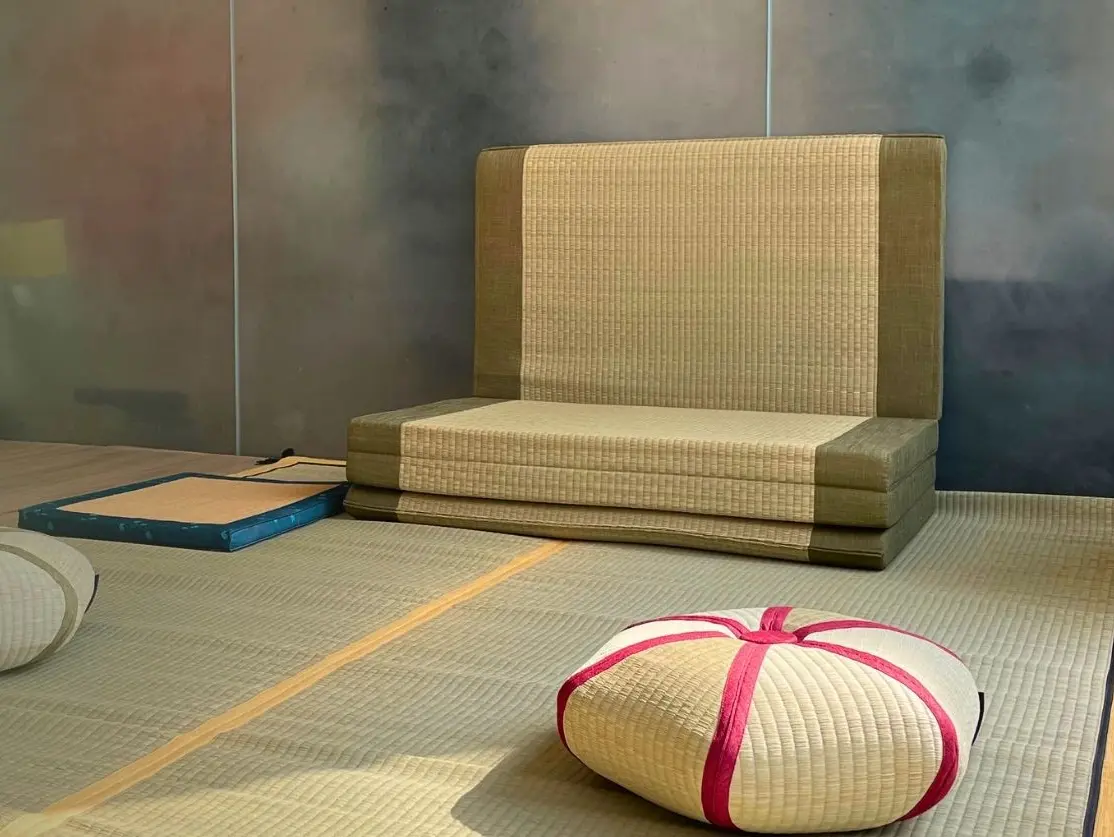Tatami Beds vs. Spring Mattresses: Which is Right for You?
Choosing a new bed can be a surprisingly big decision, especially when you start looking beyond the usual spring mattresses. Perhaps you've heard of tatami beds, those firm, traditionally Japanese sleeping surfaces, and now you're wondering, what exactly is the difference? And more importantly, which one offers the better sleep for you?
Let's break down these two very distinct approaches to getting a good night's rest.
The Familiar Comfort of Spring Mattresses
Most of us grew up with spring mattresses. They're designed with coils inside – either interconnected or individually wrapped (like in pocketed coil mattresses) – that provide bounce, contouring, and pressure relief.
Support & Comfort: Spring mattresses offer a range of firmness levels, from super soft to extra firm. The coils adapt to your body's shape, distributing weight and, in theory, reducing pressure points. Many people find the "give" of a spring mattress to be very comfortable.
Breathability: Depending on the materials used in the comfort layers, spring mattresses can offer decent airflow, helping to regulate temperature.
Motion Isolation: If you share a bed, individually pocketed coils do a better job of isolating motion, meaning you're less likely to feel your partner tossing and turning. However, traditional interconnected coils can transfer motion quite easily.
Durability: A good quality spring mattress can last 7-10 years, though sagging can become an issue over time, especially in less expensive models.

Enter the Tatami Bed: A Different Philosophy of Sleep
Tatami beds, or more accurately, tatami mats used for sleeping (often on a low bed frame or directly on the floor), represent a fundamentally different philosophy. They are incredibly firm, made from woven rush grass and rice straw.
Firm Support & Spinal Alignment: This is where tatami mattresses truly shine for some. Their firm, flat surface provides consistent, even support that encourages proper spinal alignment. For back and stomach sleepers, or those with back pain who prefer a very firm surface, this can be a game-changer.
Breathability & Hypoallergenic: Made from natural fibers, tatami mats boast excellent airflow. This natural breathability helps prevent moisture build-up and can be a benefit for those with allergies or who tend to sleep hot. They can also be aired out easily.
Lightweight & Space-Saving: Tatami mats are significantly lighter than most spring mattresses and many are designed to be rolled up or easily moved, making them ideal for smaller spaces or if you like to reconfigure your room often.
Durability: With proper care, tatami mats are resistant to sagging and can be quite durable. Washable covers are often available for easier cleaning.
Aesthetic & Experience: Beyond just function, tatami beds offer a minimalist, authentic experience. Some people just appreciate the calm, traditional aesthetic they bring to a bedroom.

Key Differences between a Tatami Mattress and a Spring Mattress
Sprint Mattress | Tatami Mattress | |
Firmness | Varies widely (soft to firm) | Very firm, consistent |
Support Type | Coils provide bounce & contouring | Natural, even support from woven materials & padding |
Breathability | Good, depending on materials | Excellent (natural fibers) |
Weight | Heavy, difficult to move | Light, easy to move |
Thickness | Generally thicker (8-14+ inches) | Thinner (typically 3-5 inches) |
Ideal for | Side, back, stomach sleepers (comfort preference) | Back & stomach sleepers, those preferring firm support |
Motion Isolation | Varies (better with pocketed coils | Minimal, due to firm, flat surface |

So, Which One Should You Choose?
Honestly, there isn't a single "better" option; it truly boils down to personal preference and your individual needs.

A tatami mattress enabling perfect spinal alignment v/s spring mattress where spine alignment can be poor
Choose a Spring Mattress if:
You prefer a softer, more plush feel, enjoy the "bounce" of a traditional bed, or need significant contouring for side sleeping. If you're used to spring mattresses, the transition might be easier.
Consider a Tatami Mattress if:
You suffer from back pain and need very firm, consistent support, you prefer a minimalist sleeping style, you appreciate natural materials and excellent breathability, or you have limited space and value easy portability. It might take some getting used to if you're accustomed to softer beds, but many people find the adjustment well worth it.Ultimately, both options offer distinct advantages. Taking the time to consider your sleep habits, comfort preferences, and any specific health needs (like back pain) will guide you to the perfect choice for your unique sleep sanctuary.
